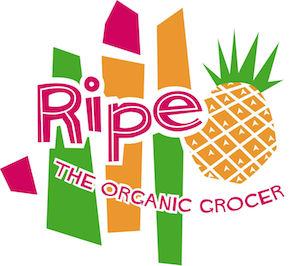Although commonly thought of as a grain, the seeds we eat as buckwheat are the fruit seeds of a plant similar to rhubarb. In culinary terms though, buckwheat can be considered a grain, and is cooked and prepared in the same manner as other whole grains, such as quinoa, brown rice and barley.
In many cultures, buckwheat is prized for its super nutrition and versatility, and you’ll find it in a variety of preparations, such as the buckwheat noodles of Japan and Korea, (Soba) European buckwheat pancakes, and many Eastern European dishes use buckwheat in its most simple form – wholegrains made into porridges or grain dishes. The small triangular seeds of buckwheat can be toasted in a frying pan to bring out their earthy rich flavour, and this form is known as Kasha. As with many foods that have a long history as “peasant food” Buckwheat is highly nutritious and can be made into sustaining foods that are very satisfying and delicious. Buckwheat is gluten free, and is an excellent source of protein and amino acids, and has excellent protective health benefits for the cardiovascular system, helping to reduce cholesterol and help to stabilise and maintain healthy blood sugar levels.
Buckwheat has a reputation for tasting kind of weird and bitter. This is perhaps due to the fragility of buckwheat flour, which tastes quite bitter when it is not fresh, and can make baked goods taste flat and bitter. This reputation is unfortunate, as buckwheat is actually a delicious alternative to rice and other grains, and meals that include buckwheat offer sustained energy that keep you feeling satisfied for longer. It is really easy to cook, (easier than rice) and leftovers last well and can be re-hashed into many different dishes. Store opened buckwheat flour in the fridge in an airtight container.
Basic preparation for buckwheat:
Hulled buckwheat can be toasted in a heavy frypan for a few minutes until it starts to smell toasted. You can add this to cereals, muesli bars or sprinkle it into savoury dishes, soups and stews at this point., or you can proceed…
Add 2 parts water or stock to each part buckwheat, and simmer with a lid on for 15-20 minutes, until all water is absorbed. This can also be done by placing an ovenproof lid onto the pot and placing it in a medium oven.
Cooked buckwheat keeps well in the fridge, to use later in porridge or in savoury dishes. It can replace brown rice or potatoes, and is excellent with winter stews and casseroles.
Try these recipes:
Buckwheat Sweet Potato patties, Buckwheat porridge, Savoury Buckwheat Hash.
Buckwheat flour is a very nutritious alternative to wheat flour, and it is low GI and gluten free. It can be used to make buckwheat pancakes, and is useful when making blends of gluten free flours in cakes and biscuits.
Try this recipe for banana muffins.

